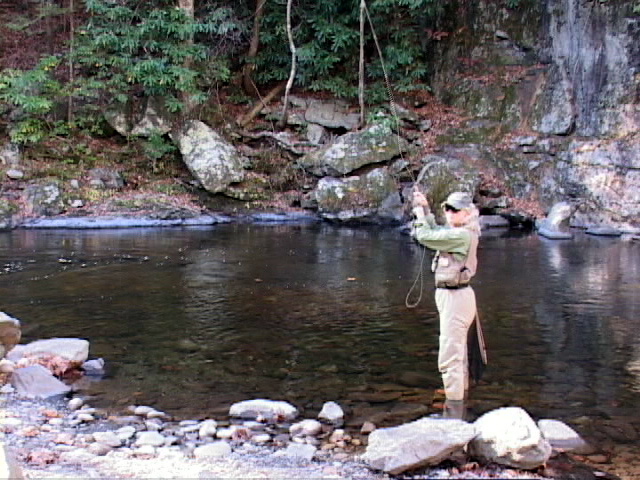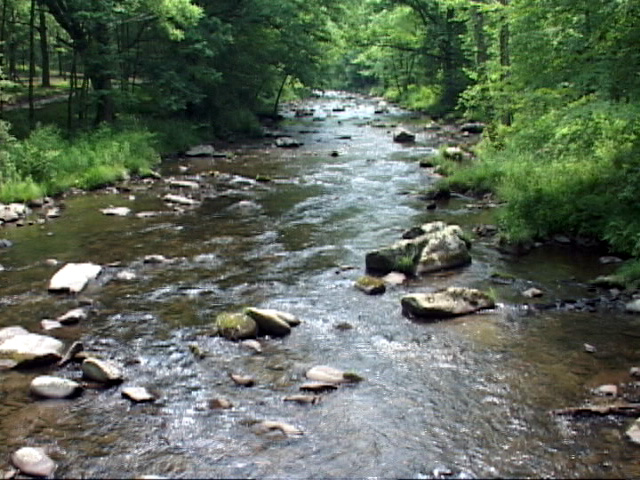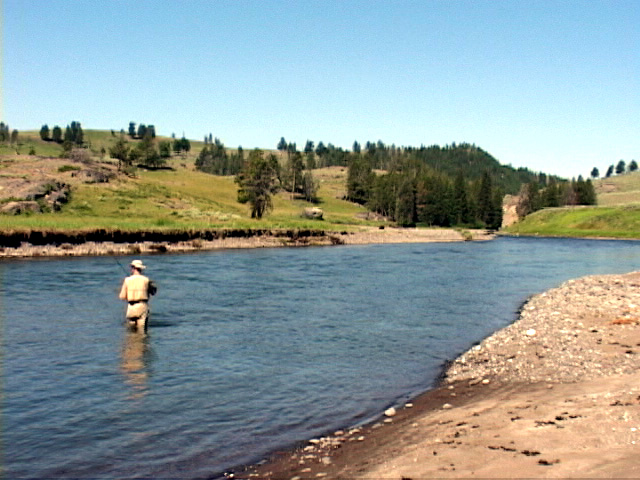Contents
- Great Smoky Mountains National Park – Top Two Streams
- Yellowstone National Park – Top Two Streams
- Fly Fishing Tailwater Streams
- New Euro nymph/Hi-sticking flies
- New Perfect Fly Euro/Nymph Fly Rod Series
- New Perfect Fly Spey Fly Rod Series
Great Smoky Mountains National Park-Top Two Streams
You are probably wondering why we choose to list the top two streams instead of the top stream. That’s because about half of the park is in the state of North Carolina and half in the state of Tennessee. https://www.flyfishingsmokymountains.com/
 Angie Marsh fishing Little River which is on the Tennessee Side of the park.
Angie Marsh fishing Little River which is on the Tennessee Side of the park.
The Tennessee side of the park is blessed with several different streams that provide year-round fly fishing opportunities. Little River has both brown and rainbow trout in the middle and lower elevations and brook trout in the upper sections. We will label it the best one on the Tennessee side of the park but the choice is very debatable. There are other streams that provide very good fly fishing opportunities.
There are three prongs of Little River – the East Prong, West Prong and Middle Prong. They are really three entirely different streams that flow together near the entrance to the park near Townsend. We are referring to the East Prong which is the largest of the three prongs. Much of the stream is easily accessed from a paved road that closely follows the stream from its lower portion all the way past the Elkmont Campground; however, there are several miles of the stream above Elkmont accessed only by tail. There are several small tributary streams that provide more small stream fishing opportunity that flow into the upper segment of Little River above Elkmont Campground. The various sections of Little River can be easily accessed from Gatlinburg, Townsend and Cades Cove.
 Hazel Creek which is on the North Carolina side of the park.
Hazel Creek which is on the North Carolina side of the park.
This is considered the best by many but that could be debatable. There are several very good ones. Probably the best advantage is the fact it isn’t easy to access; however, you can turn that around and say probably its biggest disadvantage is the effort it requires to access it. You have to either cross Fontana Lake or make a very long hike to get around it to get to Hazel Creek. It has a wide diversity of insect species and large supply of aquatic insects for the trout to eat.
Hazel has a good population of brown and rainbow trout with brook trout in its higher elevations. It has several tributary streams including Sugar Fork, Bone Valley, Walker Creek, and Proctor Creek. Hazel Creek is a popular stream for back packing and it has several remote campsite locations along its course.
Yellowstone National Park-Top Two Streams http://www.flyfishingyellowstonenationalpark.com/
You are probably wondering why we choose to list the top two streams instead of the top stream in Yellowstone National Park. That is because the park is very wide and depending on where you are staying, may take half the day just to reach a stream. The Firehole River and the Lamar River are on opposite sides of the park.
 The Firehole River is one of the best as well as most unusual trout streams there is. Many would argue that the Madison River would be the top stream to fish on the Western Side of the park and it is a very good one but it’s limited inside the park boundaries with miles of very good water outside the park. The warm water from geysers provide a longer season that the pure freestone streams inside the park. It can get a little too warm during mid summer but even then, its uppermost reaches offer very good opportunity. It is usually the first stream anglers plan to fish on the opening day of a new season because the water is usually warm enough to provide good hatches and good dry fly fishing opportunity.
The Firehole River is one of the best as well as most unusual trout streams there is. Many would argue that the Madison River would be the top stream to fish on the Western Side of the park and it is a very good one but it’s limited inside the park boundaries with miles of very good water outside the park. The warm water from geysers provide a longer season that the pure freestone streams inside the park. It can get a little too warm during mid summer but even then, its uppermost reaches offer very good opportunity. It is usually the first stream anglers plan to fish on the opening day of a new season because the water is usually warm enough to provide good hatches and good dry fly fishing opportunity.
 The Lamar River is my favorite stream in the Yellowstone National Park. It is in the upper eastern section of the park and one of the last streams in the park to get into a good condition to fish. Most of the trout are cutthroats but the other species of trout are also there. It is 44 miles long and the largest tributary to the Yellowstone River.
The Lamar River is my favorite stream in the Yellowstone National Park. It is in the upper eastern section of the park and one of the last streams in the park to get into a good condition to fish. Most of the trout are cutthroats but the other species of trout are also there. It is 44 miles long and the largest tributary to the Yellowstone River.
Fly Fishing Tailwater Streams

Two anglers fishing the West Branch of the Delaware in New York a few miles below Cannonville Dam
The West Branch is an excellent tailwater. Just in case you are very new to fly fishing, please be advised that tailwaters are streams that lie below man made dams. Many tailwater streams didn’t have any trout prior to construction of the dam but others did. Generally, if the stream was in a climate where the water temperature didn’t exceed the high sixties to the low seventies during the hottest summer months, there was usually a population of trout. Streams that had water that exceeded the high sixties to low seventies during the hottest summer months did not have a population of trout. In many, if not most of those cases, constructing a bottom release dam of substantial height, released water cold enough to support trout at least for all except the warmest months of the year. Many such dams released water cold enough to support trout year round. The ability of the tailwater stream to support trout greatly depends on how cold the water being released is, how often it is released and the volume of water that is being released. Almost all tailwater streams vary greatly in respect to how much, how often and how cold the being released is. Construction of the dams for flood control and electrical energy throughout the nation has resulted in tailwater streams that vary greatly in this respect. Some are capable of supporting trout year round and others for only the colder months of the year.